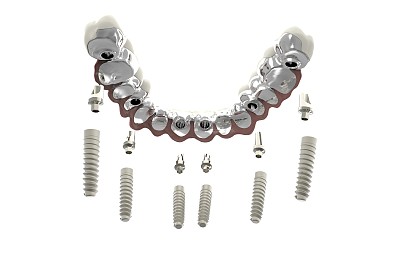Comprehensive Guide to Understanding and Choosing Dental Implant Treatment for Optimal Oral Health and Aesthetic Benefits
Summary: Dental implants have transformed oral health and cosmetic dentistry by providing effective solutions for tooth loss. This comprehensive guide delves into understanding dental implants, covering their benefits, treatment process, and factors influencing the choice of implant types. By highlighting the importance of optimal oral health and aesthetic improvement, this article aims to equip readers with the knowledge necessary to make informed decisions regarding their dental implant treatment. From evaluation to recovery, each step is intricately outlined, allowing potential patients to navigate the world of dental implants confidently.
1. The Importance of Dental Implants

Dental implants are crucial for restoring both function and aesthetics to individuals with missing teeth. Unlike traditional dentures, which may shift and cause discomfort, implants offer a permanent solution that mimics the natural tooth structure. They anchor securely into the jawbone, providing a foundation similar to that of a natural tooth.
One of the most significant advantages of dental implants is their impact on oral health. Missing teeth can lead to bone loss in the jaw, which may affect facial structure and lead to further dental issues. Implants stimulate the jawbone, preventing deterioration and promoting a healthier oral environment.
Additionally, dental implants can improve an individual’s quality of life. They allow for better chewing efficiency, which contributes to better nutrition and overall health. Enhanced speech clarity can also be a remarkable benefit, allowing individuals to speak confidently without the worry of slippage or sound alterations common with dentures.
2. Understanding the Dental Implant Process
The process of getting dental implants typically involves several stages, starting with a thorough evaluation by a qualified dentist or oral surgeon. This initial consultation is vital to determine the suitability of implants, which includes examining the patients oral health and considering factors like bone density.
Once deemed a suitable candidate, the next step involves the surgical placement of the implant. During this procedure, a titanium post is inserted into the jawbone, serving as the root of the new tooth. After placement, a healing period allows the bone to fuse with the implant, a process known as osseointegration, which is critical for the long-term success of the implant.
Finally, after adequate healing, an abutment and crown are attached to the implant. The abutment connects the implant to the dental crown, which is then custom-designed to match the color and shape of the surrounding teeth. This final step ensures that the implant blends seamlessly with the patient’s natural teeth, offering both functional and aesthetic benefits.
3. Factors Influencing Implant Choices
When considering dental implants, several factors influence the choice of the type of implant that suits a patients needs. These include the location of the missing tooth, the amount of available bone, and any underlying health issues that may affect healing. For instance, single implants may be suitable for isolated tooth loss, while multiple implants can support bridgework for several missing teeth.
The materials used in dental implants often vary, with titanium being the most common due to its high durability and biocompatibility. However, ceramic implants also offer an aesthetic advantage, particularly for front teeth where the appearance is crucial. Patients should discuss these materials with their dental provider to find the best match for their needs.
Finally, the expertise of the dental professional performing the procedure plays a vital role in the success of the implant. Selecting a skilled and experienced oral surgeon or dentist can significantly enhance outcomes, minimizing risks and ensuring a smoother recovery process.
4. Aftercare and Maintenance for Implants
Post-surgery aftercare is essential for the longevity of dental implants. Patients must follow specific instructions regarding oral hygiene practices to maintain both the implant and surrounding teeth. Regular brushing, flossing, and the use of antibacterial mouth rinses can help prevent infections that can jeopardize the integrity of the implant.
Routine dental check-ups are equally critical. These visits allow the dentist to monitor the condition of the implant, ensuring it integrates well with the jawbone and maintaining overall oral health. During these assessments, any potential issues can be addressed promptly.
Lastly, lifestyle choices such as quitting smoking and maintaining a balanced diet contribute significantly to the success of dental implants. These habits encourage better bone healing and overall oral health, further enhancing the benefits of the dental implants over a long time.
Summary:
The journey through understanding dental implants encompasses their significance in treating tooth loss, the detailed process through which they are placed, the important factors influencing each patients choice, and the critical aftercare necessary to ensure optimal results. Armed with this knowledge, individuals can make informed decisions regarding their dental health and aesthetic goals.
This article is compiled by Vickong Dental and the content is for reference only.


